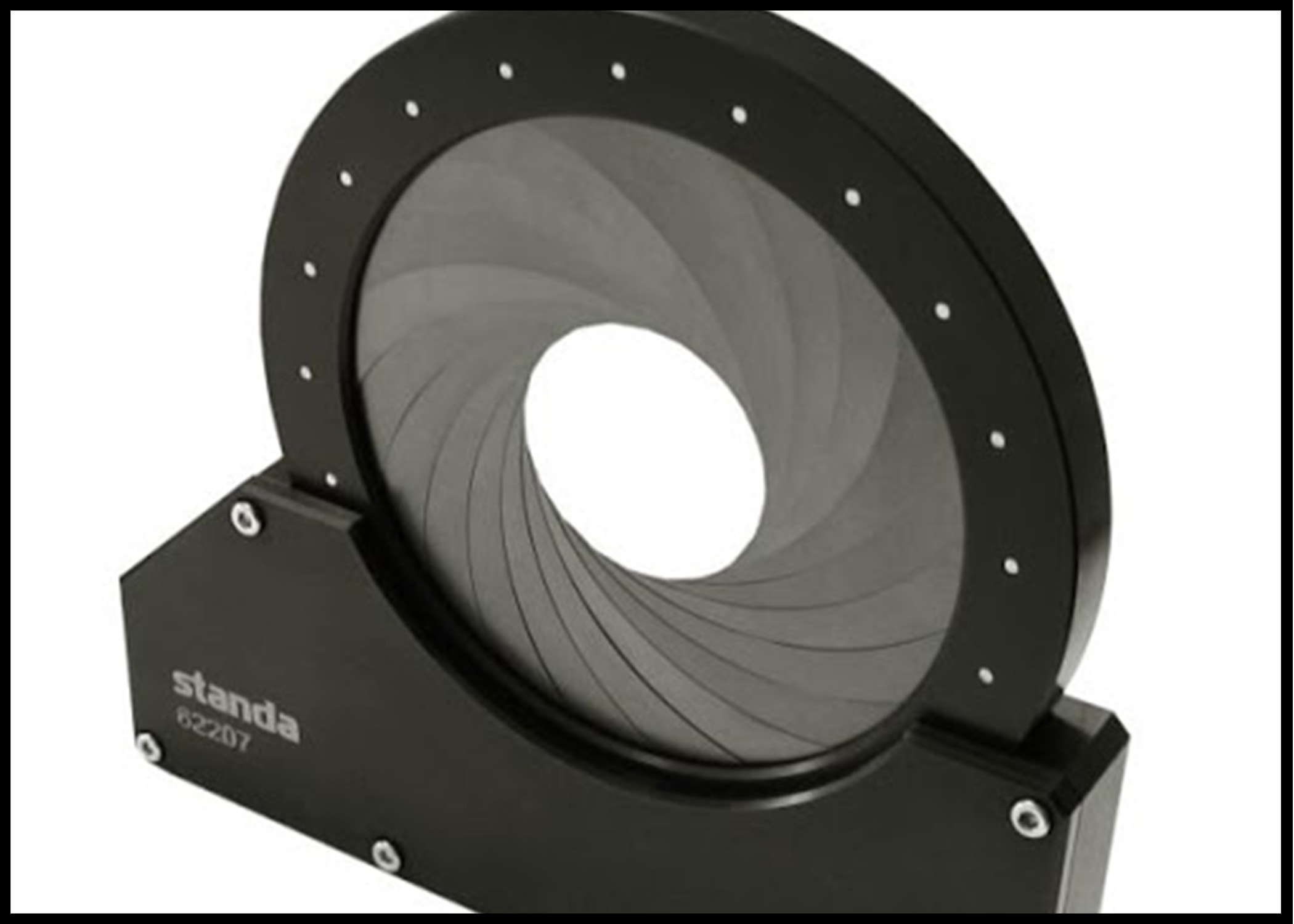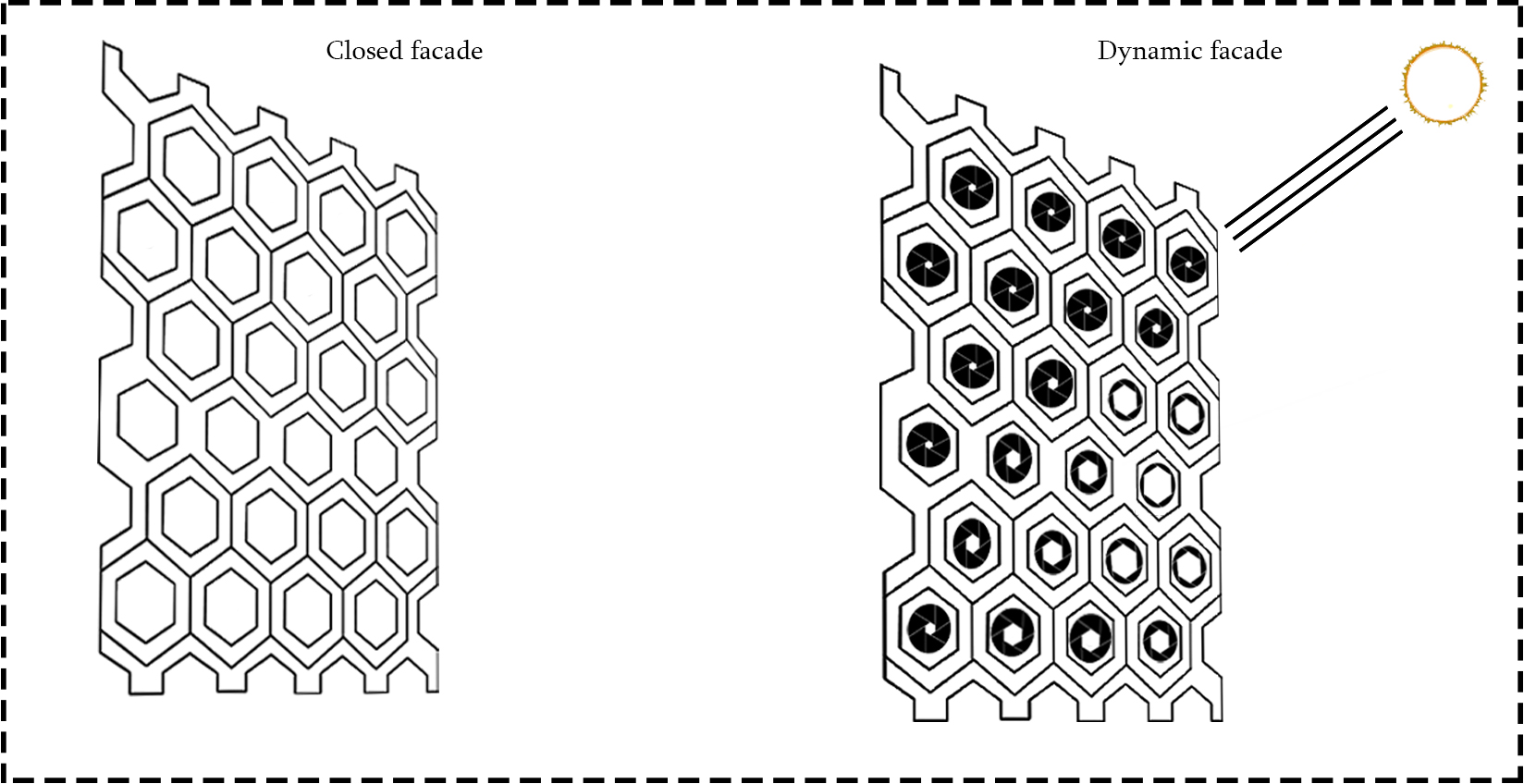1. Principles and Practices¶
Aperture !!¶
This week I worked on defining my final project idea and started to getting used to the documentation process.¶
KINETIC STRUCTURES, DESIGN AND FABRICATION!¶
As final project theme, I want to work on a kinetic facade, which modules can receive data from a LDR and provide protection from the sun using some servos or a pneumatic system. Here are some videos of some projects that has inspired me.¶
Concept and Schematic Design :¶
Following are few sketches describing my idea for the final project. I am still not sure about the component that I want to design, so I have used pattern to give a basic idea of the functioning of the installation.¶



## Bio material :
### BIO FILTER ( BIOPLASTIC + ACTIVATED CHARCOAL )
Activated charcoal is one material that seems especially applicable to Fab Lab makers, because of its ecologically sound and purifying properties. It is essentially a form of incredibly microporous carbon, processed from natural carbon-rich materials by applying various gases or chemicals to ‘burn’ in tiny holes and thus exponentially increasing its surface area. The result ? A material that can efficiently filter out all manner of impurities and toxins. A super-sponge, if you will. Bioplastics present themselves as an excellent and similarly sustainable substrate for activated charcoal with a wide range of uses.¶

## Biomimicry
#### Octopuses, cuttlefish and squid belong to a class of animals referred to as cephalopods. These animals, widely regarded as the most intelligent of the invertebrates, use their color change abilities for both concealment and communication.
#### To actually control the color of their skin, cephalopods use tiny organs in their skin called chromatophores. Each tiny chromatophore is basically a sac filled with pigment. Minute muscles tug on the sac, spreading it wide and exposing the colored pigment to any light hitting the skin. When the muscles relax, the colored areas shrink back into tiny spots.
 .
.
 .
.
Inspiration :¶
There are various examples around the world for responsive installations and also facades, where these structures have been designed to respond to movement, light, touch, sound, wind, etc.¶
Al Bahar Towers - Aedas¶
The screen opperates as a curtain wall, sitting two meters outside the buildings’ exterior on an independent frame. Each triangle is coated with fiberglass and programmed to respond to the movement of the sun as a way to reduce solar gain and glare. In the evening, all the screens will close. It is estimated that such a screen will reducing solar gain by more than 50 percent, and reduce the building’s need for energy-draining air conditioning.¶
Tobias Becker’s Breathing Skins Project¶
Based on the concept of biomimicry, the technology is inspired by organic skins that adjust their permeability to control the necessary flow of light, matter and temperature between the inside and the outside. In addition to these performative benefits, the constantly changing appearance of these façades provides a rich interplay between the exterior natural environment and interior living spaces.¶
Research¶
[Firefly experiments]
2D and 3D Modeling software’s:¶
Rhino + Grasshopper (Firefly)¶
Fusion¶
Files :¶
The components:¶
| INPUT | OUTPUT |
|---|---|
| Light sensor (PT15-21C/TR8) | Servo motor |
| Air polution (MQ135 sensor) |
The Mechanism :¶
- A natural optical system that has a diaphragm and an aperture is the human eye. The iris is the diaphragm, the pupil is the aperture. … An iris diaphragm can reduce the amount light that hits a detector by decreasing the aperture, usually with “leaves” or “blades” that form a circle.¶
- How does an iris mechanism work?¶
A number of carefully-shaped blades are anchored to two different rotating rings. As the rings rotate, the blades move, and their combined gap in overlap forms the iris. The more blades in the diaphragm, the closer is gets to maintaining a circular opening.¶
